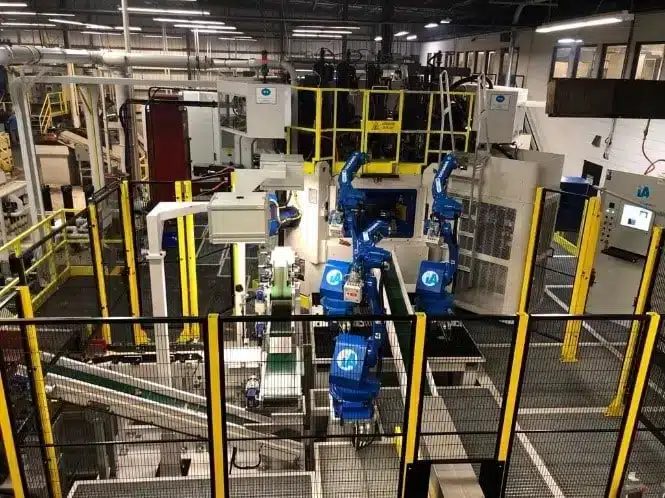Last edit: 01/08/2023

EN ISO 11161 is the reference standard regarding the safety of the Integrated Machinery System (which henceforth in the article will be simply called IMS).
The standard defines the IMS as follows:
[EN ISO 11161] 3.1.1 Integrated machinery system
"Two or more machines, capable of operating independently of each other, which are interconnected by controls and act together in a coordinated manner for the purpose of fabrication, production, treatment, processing or packaging of discrete parts or assemblies as part of an enterprise value chain".
In this context, a significant aspect of an accurate risk assessment for the IMS is the Layout Analysis, and it can reasonably be expected that it will become increasingly important in the coming years.
A layout analysis is carried out to have an overall understanding of the impact of the foreseeable tasks on the functional performance of the IMS based on operational requirements. This analysis should consider all the intended IMS configurations and operating modes.
As a matter of fact, in case of frequent manual interventions to parts of the IMS (e.g. inspections, maintenance, set-up, observation), minimal downtime and prompt restart are essential to lessen the motivation to defeat safeguarding. This can be accomplished by safeguarding for these intervention tasks and use of "task zones".
The key steps of a layout analysis can be summarized as the identification of three main elements:
- the tasks which may be performed by the operator(s)
- the task zones (in which those are performed)
- the space requirements needed to perform the task
Based upon the awareness of these three aspects the next step is the risk reduction. Therefore, it should become clearer how to distribute the safeguards in the most functional way, whether they are fixed or mobile, how to divide the area in control zones and how to define the span(s)-of-control.
Especially where multiple configurations and modifications are foreseeable, the IMS shall be designed for each intended functionality. For some manual interventions where it is impractical to stop the whole IMS, segregated zones with safety functions shall be established where operators can perform their tasks safely.
In some instances (consider the case of a large safeguarded area) the identification of task zones will clarify that further division of the safeguarded space will provide greater efficiency and throughput of the IMS while allowing foreseeable tasks to be completed in a safe manner.
The layout analysis is intrinsically required by the ISO 12100, however, its concept will be clearly defined and required with the new edition of ISO 11161, foreseen in 2023. We also expect that when the ISO 12100 will be revised, the concept will be mentioned in this Type A standard.
In the new edition of ISO 11161 a new concept will also appear: the Task Based Risk Assessment or TABRA.